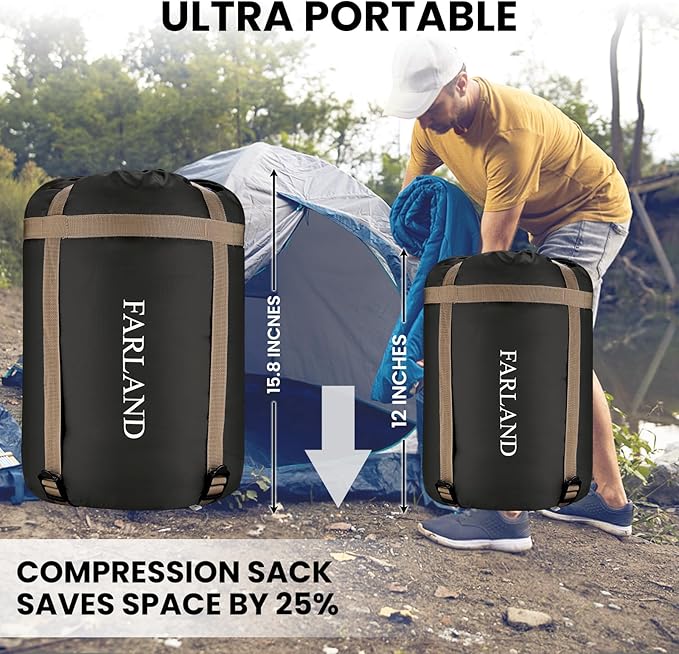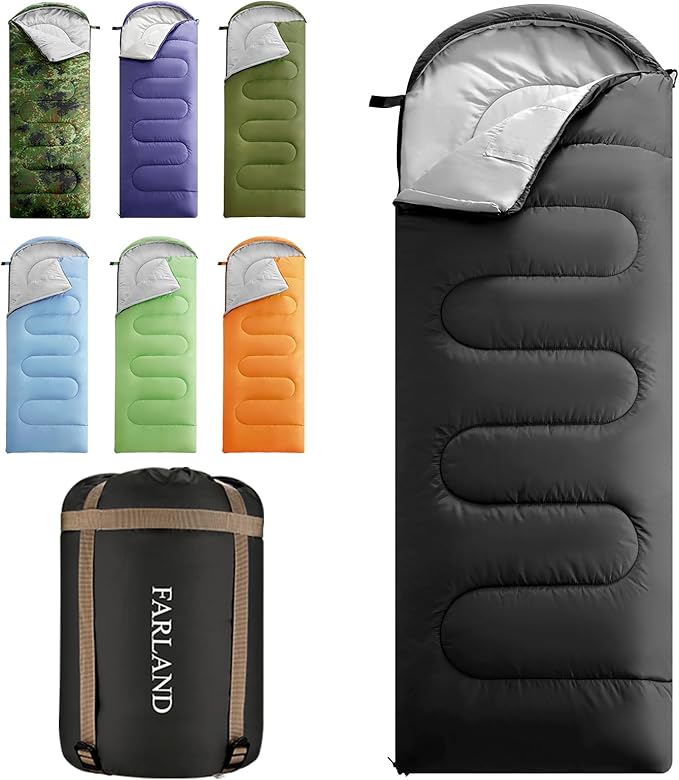In a world where sustainability is no longer optional, travellers are increasingly seeking gear that aligns with their values. One essential item for any outdoor enthusiast or backpacker is the travel sleeping bag—but not just any kind. The rise of the eco-friendly travel sleeping bag is changing the way we camp, hike and explore the world. This guide dives deep into what makes a sleeping bag eco-friendly, how to choose the right one, and why it matters for both you and the planet.
Why Choose an Eco-Friendly Travel Sleeping Bag?
The environmental impact of traditional outdoor gear is significant. From synthetic materials that take centuries to decompose to manufacturing processes that emit harmful chemicals, the footprint of your sleeping bag can be surprisingly large.
Choosing an eco-friendly travel sleeping bag helps reduce:
- 🌍 Carbon emissions from production
- 🧵 Waste from non-biodegradable materials
- 🧪 Toxic chemicals used in waterproofing and insulation
- 🐑 Animal cruelty, especially in down-filled bags
By opting for sustainable alternatives, you’re not just making a personal choice—you’re contributing to a global movement toward responsible travel.

What Makes a Sleeping Bag Eco-Friendly?
Not all sleeping bags labelled “green” are created equal. Here are the key features to look for:
1. Sustainable Materials
- Recycled polyester: Made from post-consumer plastic bottles, reducing landfill waste.
- Organic cotton: Grown without pesticides, safer for farmers and ecosystems.
- Tencel or bamboo fibres: Renewable, biodegradable and soft to the touch.
2. Ethical Insulation
- Recycled down: Sourced from post-consumer garments, offering warmth without harm.
- Synthetic insulation: Brands like PrimaLoft offer recycled synthetic fills that mimic down.
3. Non-toxic Treatments
- Look for bags treated with PFC-free water repellents. PFCs (perfluorinated compounds) are harmful to both humans and wildlife.
4. Durability and Repairability
- A genuinely sustainable sleeping bag lasts. Choose brands that offer repair kits, lifetime warranties or modular designs that allow parts to be replaced.
Top Brands Offering Eco-Friendly Travel Sleeping Bags
Here are some standout companies leading the charge in sustainable outdoor gear:
Patagonia
- Known for its commitment to environmental responsibility.
- Offers sleeping bags made with recycled materials and Fair Trade Certified™ sewing.
Therm-a-Rest
- Their Argo Blanket and Vesper Quilt use recycled fabrics and down certified by the Responsible Down Standard (RDS).
Big Agnes
- Features bags with recycled insulation and bluesign®-approved fabrics, ensuring minimal environmental impact.
Vaude
- A European brand with strong sustainability credentials.
- Uses eco-friendly waterproofing and climate-neutral production.
How to Choose the Right Eco-Friendly Travel Sleeping Bag
When selecting your sustainable sleeping bag, consider the following:
1. Temperature Rating
- Choose a bag suited to the climate you’ll be travelling in.
- Look for EN or ISO ratings for standardised warmth levels.
2. Weight and Packability
- Lightweight bags are ideal for backpacking.
- Synthetic fills tend to be bulkier than down but many eco options now rival traditional designs.
3. Shape and Size
- Mummy bags offer better heat retention.
- Rectangular bags provide more room to move.
- Some brands offer gender-specific designs for a better fit and comfort.
4. Price vs. Value
- Eco-friendly gear can be more expensive upfront but it often lasts longer and performs better.
- Consider it an investment in both your comfort and the planet.
Caring for Your Eco-Friendly Travel Sleeping Bag
Proper maintenance extends the life of your gear and keeps it performing well.
Cleaning Tips:
- Use gentle, biodegradable detergents.
- Wash in a front-loading machine or by hand.
- Air dry or tumble dry on low with dryer balls to restore loft.
Storage:
- Store uncompressed in a breathable sack.
- Avoid damp areas to prevent mould and mildew.
Repairs:
- Patch small tears with eco-friendly repair tape.
- Re-waterproof with PFC-free sprays.
The Future of Sustainable Travel Gear
The outdoor industry is evolving. As consumers demand greater transparency and accountability, brands are innovating with biodegradable materials, closed-loop recycling and carbon-neutral shipping practices. The eco-friendly travel sleeping bag is just the beginning.
Imagine a future where your entire camping kit—from tent to toothbrush—is made from sustainable, ethical materials. That future is closer than you think.
FAQs About Eco-Friendly Travel Sleeping Bags
Q: Are eco-friendly sleeping bags as warm as traditional ones?
A: Yes. Many use advanced recycled insulation that rivals or even surpasses traditional down or synthetic fills.
Q: Can I find an eco-friendly sleeping bag for extreme cold?
A: Absolutely. Brands like Therm-a-Rest and Patagonia offer high-performance bags suitable for sub-zero conditions.
Q: Are these bags suitable for backpacking?
A: Yes. Many models are lightweight and compressible, ideal for long treks.
Q: How do I know if a brand is truly eco-friendly?
A: Look for certifications like bluesign®, Fair Trade, RDS and Global Recycled Standard (GRS).
Q: Is recycled down safe and clean?
A: Recycled down is thoroughly cleaned and sterilised, meeting the same standards as virgin down.
Final Thoughts
Choosing an eco-friendly travel sleeping bag is more than a gear decision—it’s a statement about the kind of traveller you want to be. Whether you’re hiking through the Himalayas or camping in your backyard, your sleeping bag can reflect your values and help protect the places you love to explore.
So next time you pack for an adventure, make sure your gear is as kind to the Earth as your spirit is to the journey.

